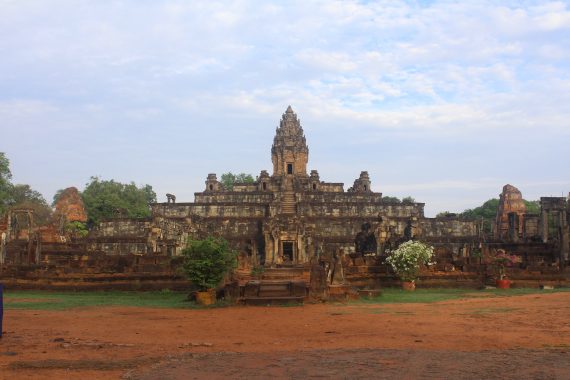Cambodia, Roluos, Angkor period (ruler: Indravarman I), 9th century (ca. 881 CE), Sandstone, laterite, and brick
Before Angkor became the center of the Khmer Empire, the royal capital was situated some fifteen kilometers to the southeast. Known as the Roluos group, three temples survive in what today is a small town. The largest of the three is the Bakong, the first pyramidal temple built on the plains below the mountaintop city of Phnom Kulen.
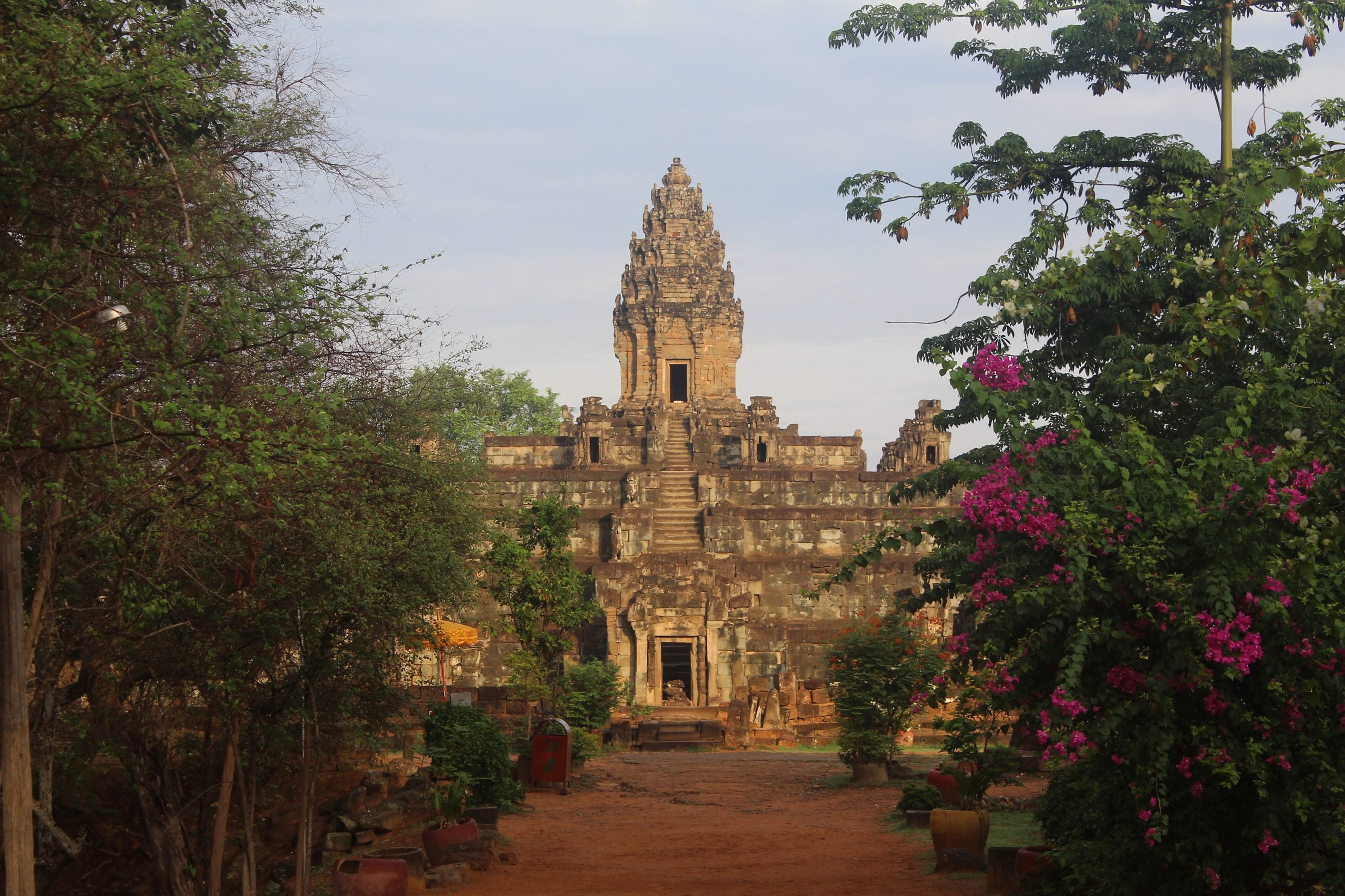
Bakong’s terraced foundation dates to the last quarter of the ninth century. This structure is faced with sandstone that holds some of the earliest surviving narrative relief carvings in Cambodia.
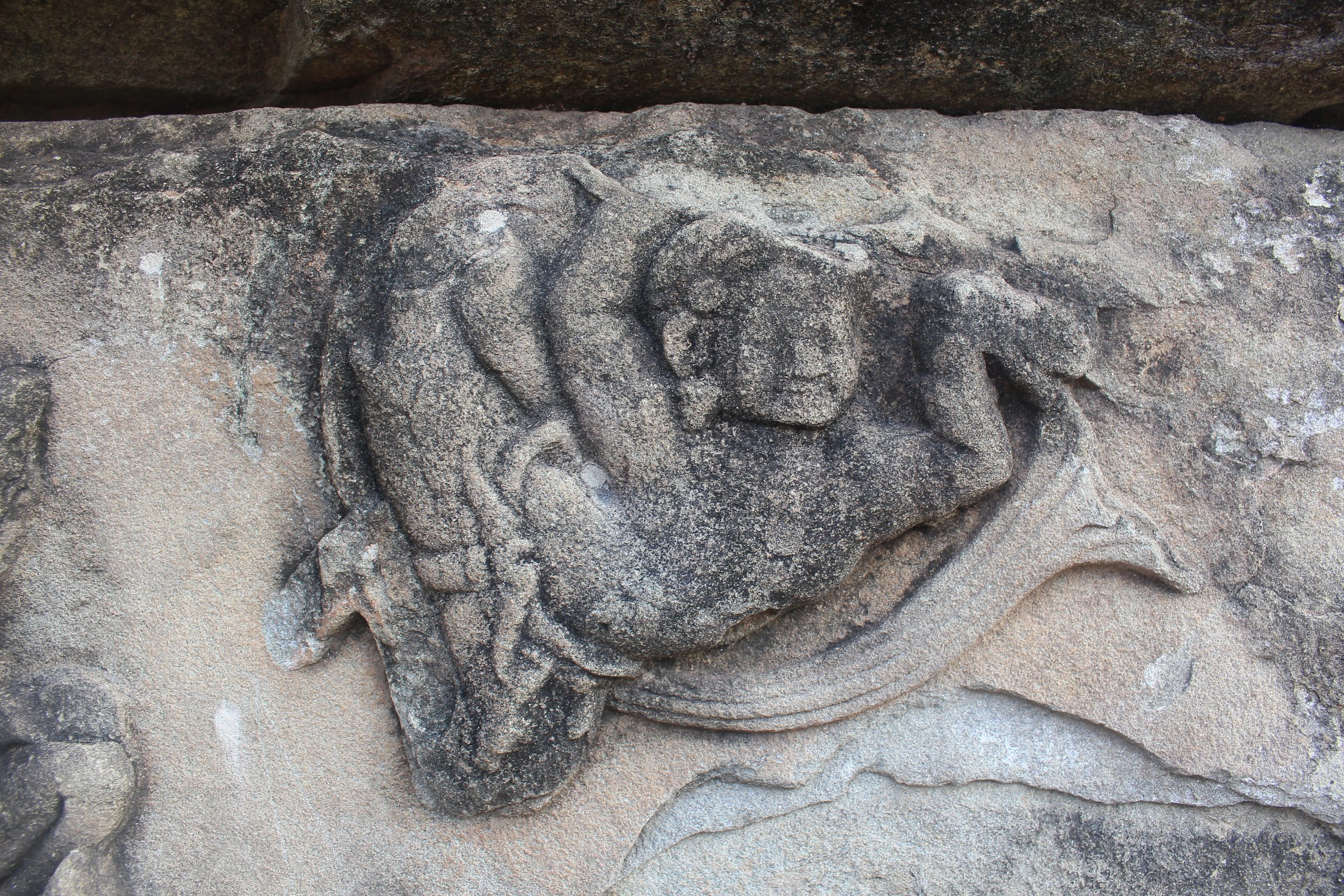

The central tower was rebuilt in the eleventh century. From its sanctum, the wide moat and surrounding landscape present a sweeping view.
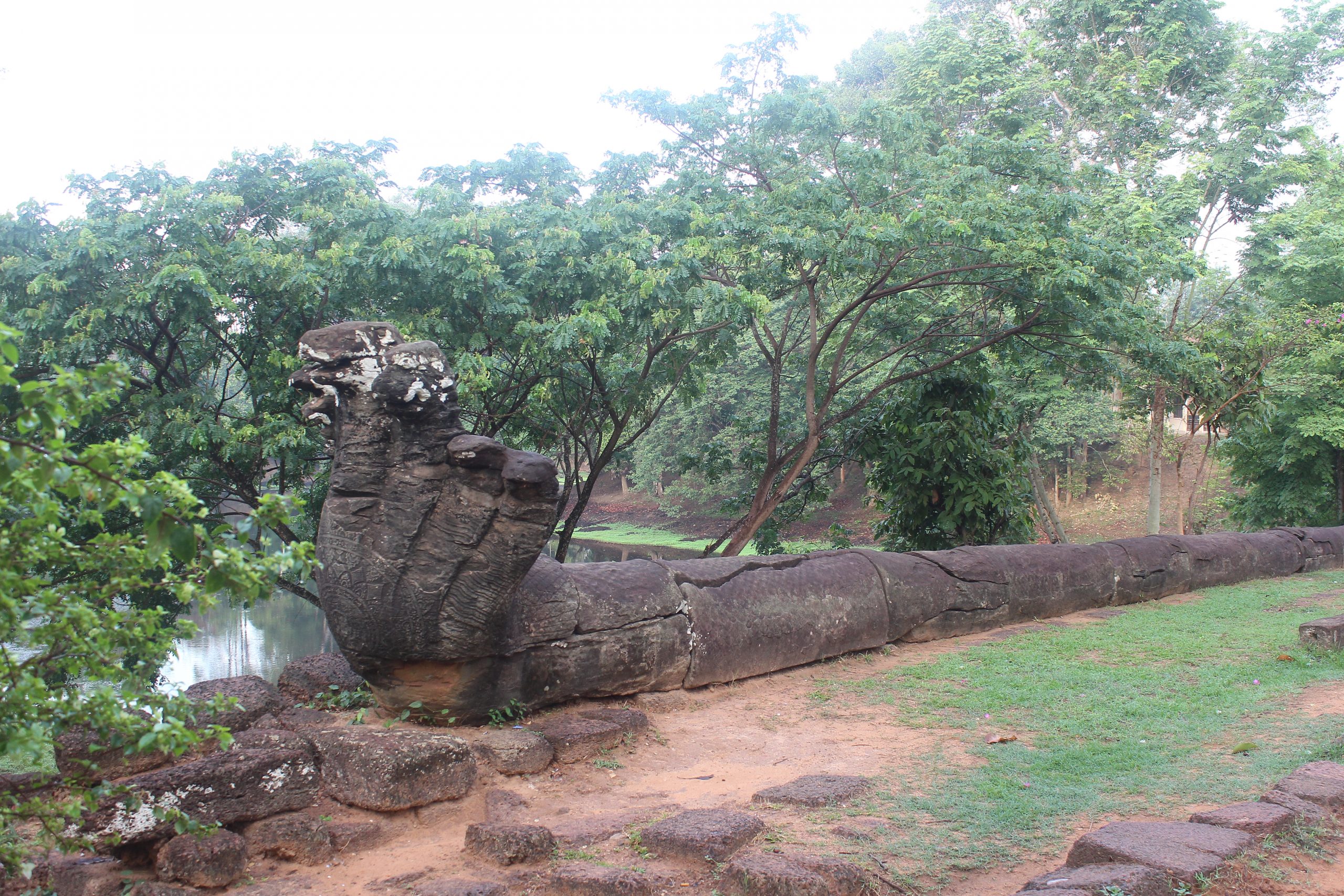
The complex seems to float like an island. A stately bridge guarded by multiheaded nagas (serpents) approaches the temple from the eastern side. In Khmer philosophy, these naga bridges connect the mundane and transcendent worlds.
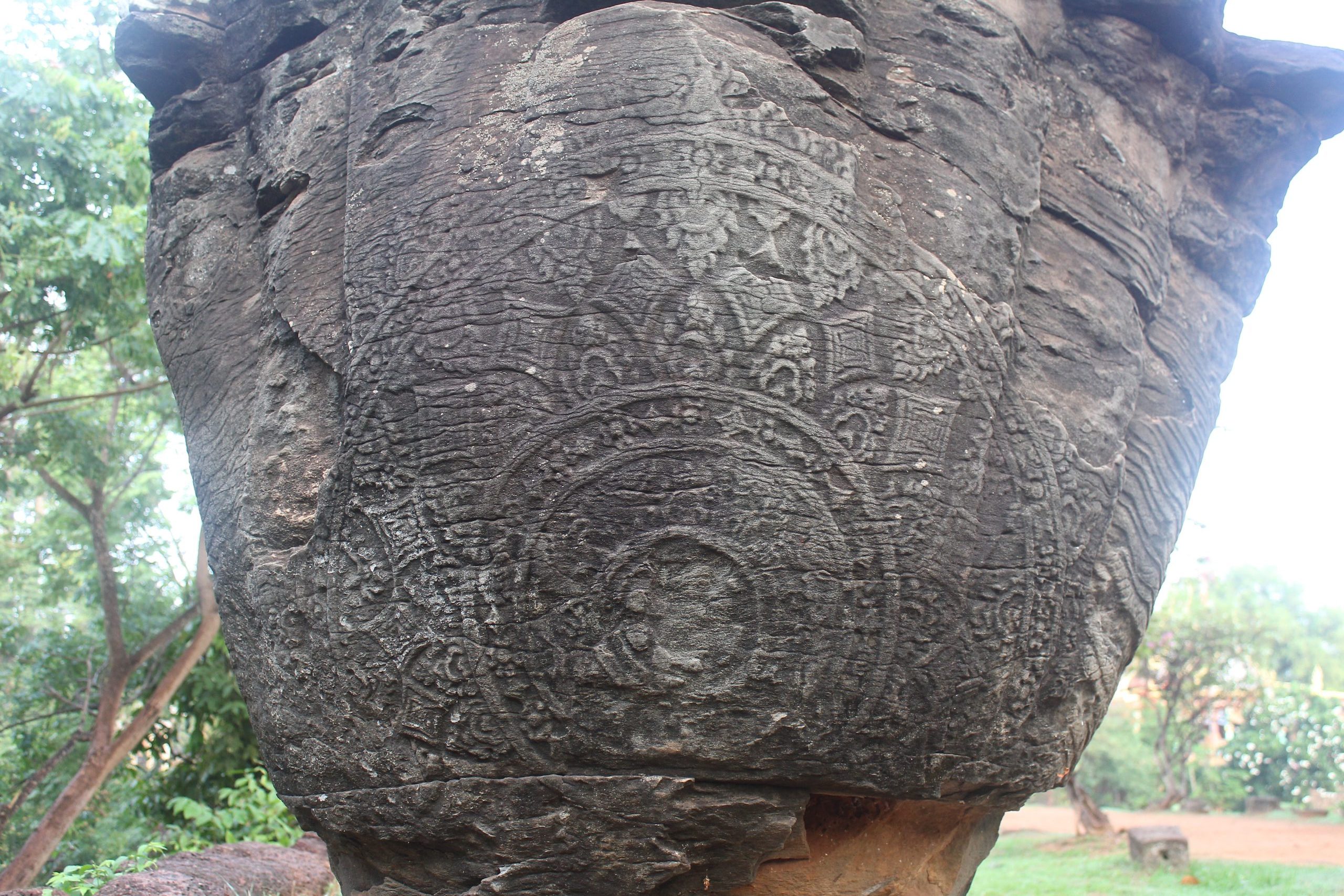
On the naga’s belly is an elaborately carved lotus mandala that fans out in geometric and plant-like designs.


